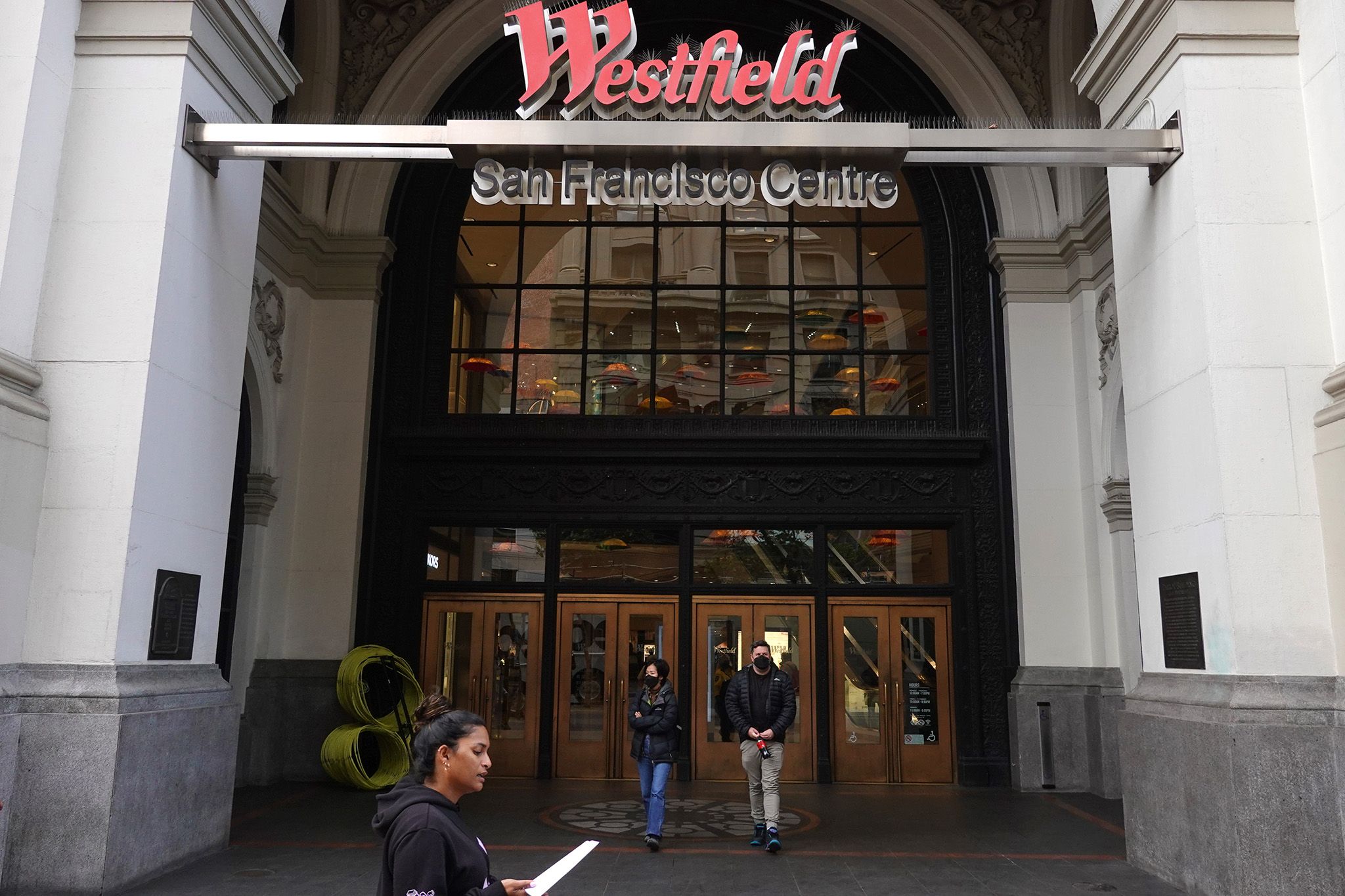The future of Westfield's SF mall is uncertain
When the news broke this week that Westfield was surrendering the San Francisco Centre mall to its lender, it didn’t take long for the city’s “doom loop” narrative to once again spring forth.
In truth, the mall operator's pulling out of the city was two years in the making. Granted, the original intent was to sell the property, rather than force it into foreclosure. Functionally, though, even as Westfield and mall co-owner Brookfield Properties cease payments on the retail complex’s loan, experts who spoke to SFGATE believe that the beleaguered building won’t become a vacant space anytime soon.
Commercial real estate values in downtown San Francisco have been plummeting for months throughout SoMa and the Financial District, as evidenced by the recent sales of 350 California St. and 550 California St., both of which sold for far below their estimated value. Westfield’s San Francisco Centre departure was likely clinched by the closure of its well-known Nordstrom outlet, which signaled that Westfield would struggle to generate enough revenue to pay its loan, estimated at $558 million.
“The value of the property is below the loan amount,” said Dennis Williams, managing director of Northmarq, a commercial real estate financial services firm. “That’s when you make the decision to give back the keys rather than sell to a third party.”
It’s not easy to refinance loans on large commercial spaces, he added, so it’s simpler to just walk away. “It doesn't mean the shopping center is folding, per se,” Williams said. “The implication is you don't have an owner who has a long-term vested interest in the property.”
At the moment, there isn’t much reason to have a long-term vested interest in San Francisco Centre. Total sales were $298 million in 2022, compared with $455 million in 2019, according to a Westfield spokesperson. Sans Nordstrom, one of the mall’s anchor tenants, that number is poised to plunge even further in 2023. Other indicators paint a worrying picture: Foot traffic has dropped 43% at the San Francisco mall since 2019, while Westfield’s other properties have seen a 98% recovery, according to data provided by the company. The mall’s vacancy rate has dipped below 55%.
Many retailers in malls take part in what’s called “co-tenancy agreements,” allowing tenants to negotiate lease terms based on proximity to an anchor tenant, a store like Nordstrom or Bloomingdale's in this case. Often, those leases have clauses that can change rental terms if an anchor tenant leaves or that allow retailers to exit leases altogether. It’s unclear if and how many stores within the Market Street shopping center have leases like this, but this would likely be the only way things could change drastically in the next six to 12 months.
That steady stream of bad news and bad press has remaining store owners at the shopping center concerned about a reputational hit and additional loss of foot traffic for their businesses. “I’m worried because business has been bad, but now I’m worried that this will make it worse,” said shoe repair shop Shoe Wiz’s owner Samuel Argueta. “People have been asking me if we’re closing, especially since Nordstrom.”
Argueta said business has been down since the pandemic and he’s been working by himself to stay afloat. If he’s forced to close his shop in the mall, he said, he would try to open nearby to keep his customer base.
A future property owner will have to get creative to bring back revenue and foot traffic. Ali McEvoy, a retail leasing specialist at Maven Commercial who previously leased properties in the mall, said there were plans in the works to transform Westfield into a more mixed-use space years ago, but the pandemic ground those to a halt. She said she’d be surprised if a new owner didn’t want to keep the first two floors of stores, but “it’s the upper floors that have always been challenging.”
Reimagining the space entirely with ample capital will be crucial for a buyer, McEvoy said, but the possibilities are endless. “There are hundreds of large operators internationally that haven't considered our market,” she said. “There are interesting concepts that can be found all over the world.”
She referenced innovative experiential concepts, as well as exhibits like the immersive Van Gogh experience in 2021. A new operator could repurpose some of the larger space into a live entertainment venue with comedy or music, for example, she said. McEvoy remains positive about the medium- and longer-term future of the building: “In two years from now, it's going to be a different world. That's how long it takes to get a deal done and open.”
David Greensfelder, a San Francisco-based retail real estate planner and consultant, told SFGATE in April 2022 that San Francisco Centre was “absolutely irreplaceable real estate” and he didn’t think the mall was at risk. When he spoke to SFGATE this week, Greensfelder said his comments show how much can change in a year. He still doesn’t think the building is at risk of being boarded up, but he does predict it could take five to seven years, as opposed to two years, to see the next iteration of the building emerge. Whether that’s an added residential component or new mixed uses on the upper floors, major alterations need to be made, he said.
San Francisco’s downtown has seen downturns before, and Williams said the situation right now reminds him of the dot-com bust but worse. The appetite for commercial investment in the city is as low as it was then, but this time, added city policies could make it harder for investors to choose a risky project.
Even if Westfield's surrendering the building has minimal effects on the mall itself, it could still have broader ripple effects throughout the commercial real estate sector in downtown San Francisco. “When you have big foreclosures and lenders take losses, it becomes harder to get new capital,” Williams said. “And that’s an important new part of reimagining of real estate.”
SFGATE reporter Susana Guerrero contributed to this story.
Source: SFGATE


